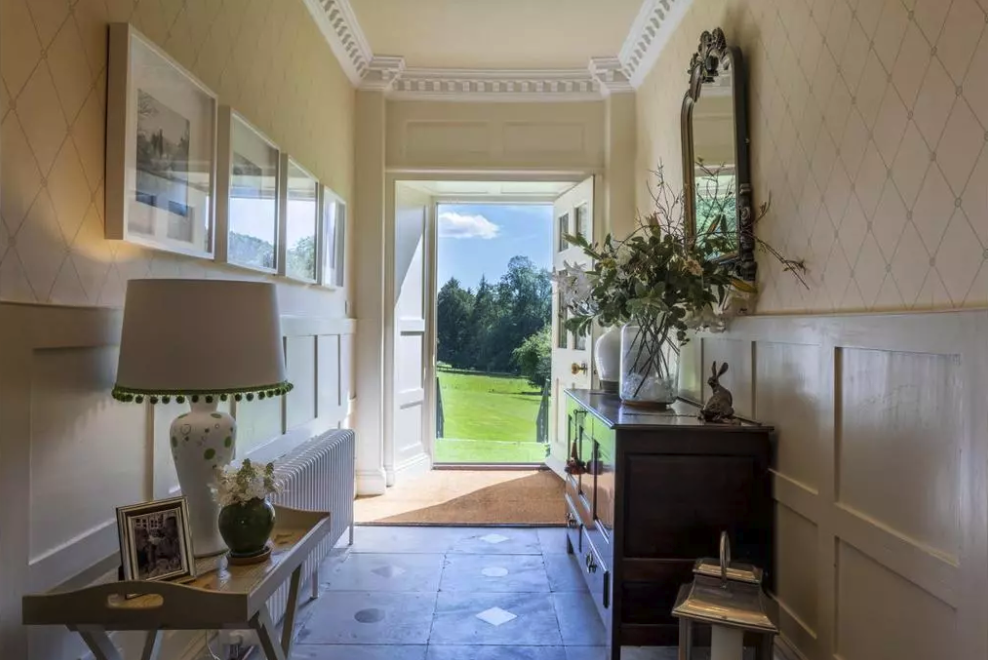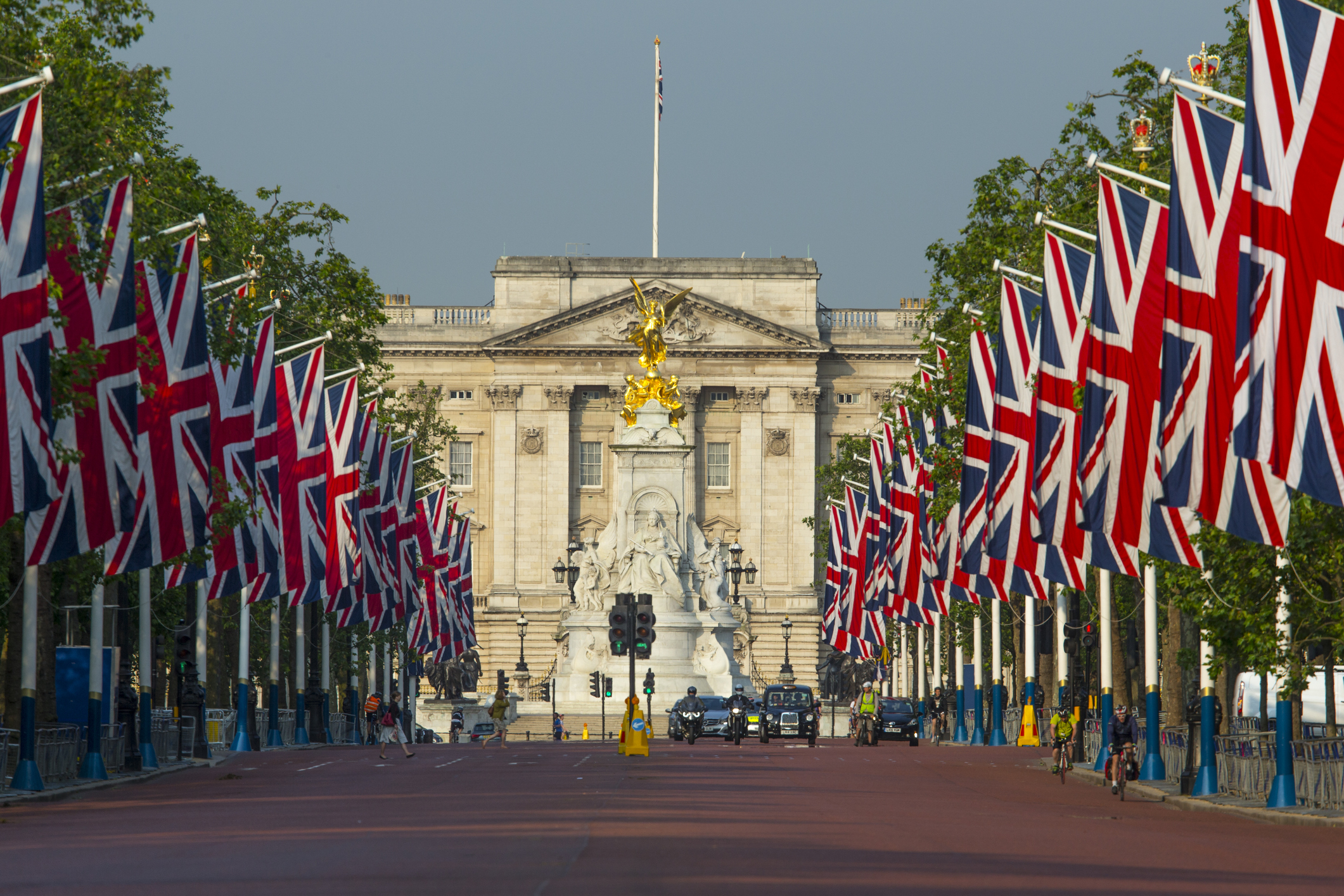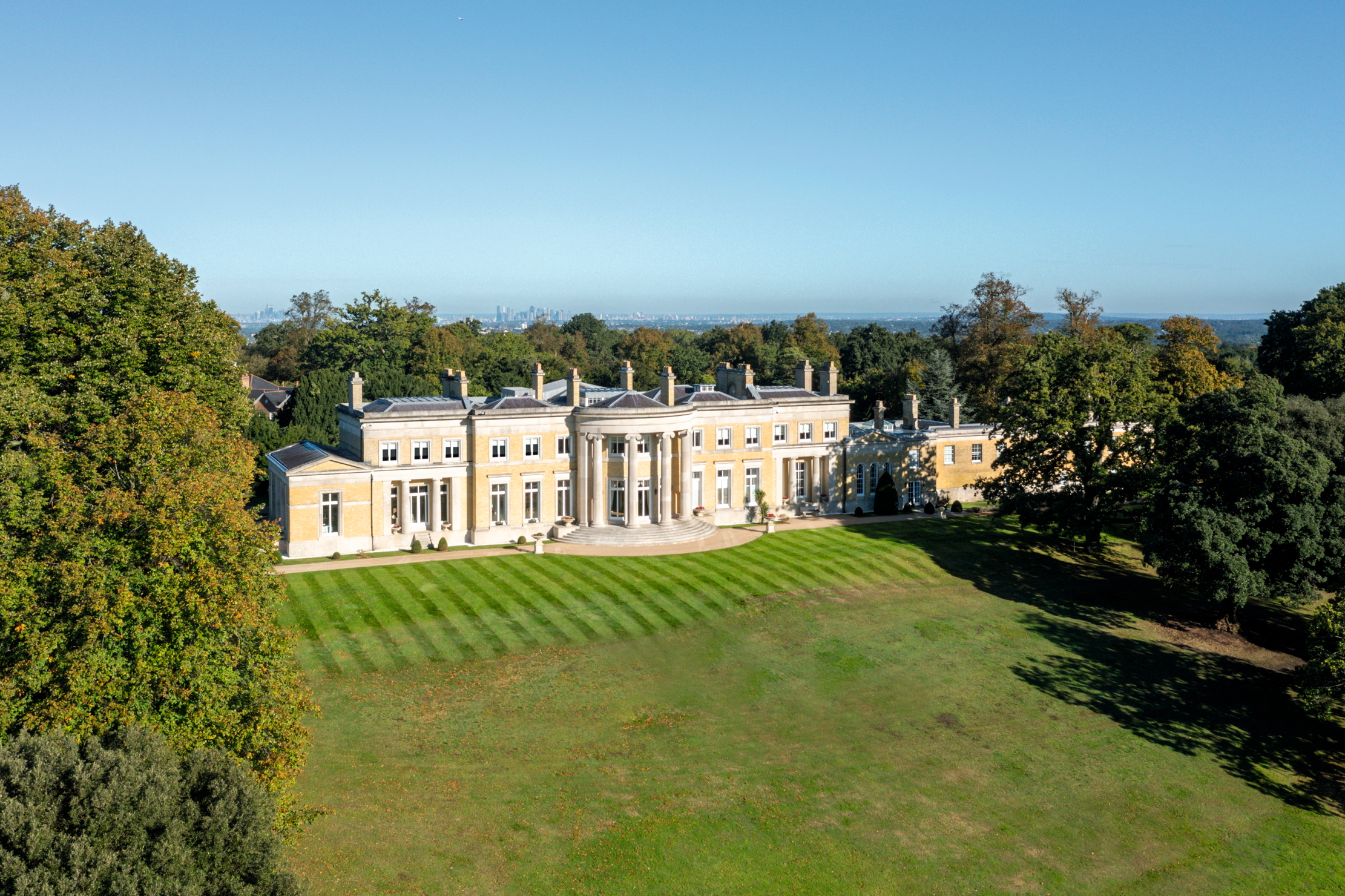Douthwaite Hall, a magnificent country house on the outskirts of one of Britain's prettiest villages, is seeking a new owner
Douthwaite Hall is a grand and beautiful home tucked away in an idyllic North Yorkshire setting, as Penny Churchill explains.


You’d think it wouldn’t be easy to lose a substantial, 9,410sq ft, ten-bedroom stone-built country house plus 33 acres within the North York Moors National Park. Yet according to Christine O’Neill, owner of— whose much-loved family home it has been for 29 years — ‘many of the locals don’t even know we’re here’.
Anyone who dreams of getting away from it all will be keen to find this home, though, sitting in the hills — or rather the Dales — of North Yorkshire. York-based Blenkin & Co are selling the handsome, Grade II-listed Douthwaite Hall with a guide price of ‘excess £4 million’.

Despite its location three miles from Kirkbymoorside and within a stone’s throw of the picturesque village of Hutton-le-Hole — described by Arthur Mee as ‘a charming little place to find in a green hollow of the moors… all up and down with a scurrying stream winding among houses scattered here and there’ — Douthwaite Hall enjoys complete seclusion within Douthwaite Dale, a steep wooded valley carved by the Dove through limestone hills that has no public footpaths or rights of way.
In medieval times, the land round about was a medieval park and hunting reserve of the powerful de Stutevilles and Nevilles of Kirkbymoorside.

According to its Historic England listing, the Shepherd family enjoyed unbroken occupation of Douthwaite Hall site from about 1500 to 1886. They must have built the original Elizabethan farmhouse, the timber crucks of which were used to support the roof of the main Georgian house, constructed in 1760.
A large wing was added in 1814 to replace a demolished section, with further alterations carried out in Edwardian times.

Period features abound throughout the house. In addition to a carved overmantel dated 1659 and a chimneypiece of 1666, there are magnificent fireplaces, the old flagstones and oak flooring, 16-pane sash windows, a handsome turning staircase with a polished handrail, and a notable 18th-century window on the half-landing, with its original glass revealing whorls made by the glass blower.
Sign up for the Country Life Newsletter
Exquisite houses, the beauty of Nature, and how to get the most from your life, straight to your inbox.
A previous owner, Admiral Sir Cyril Fuller, a distinguished naval officer who owned Douthwaite Hall in the early 20th century, is believed to have added the porthole windows and to have brought home from the First World War the impressive wrought-iron gates that open onto the flagged yard. Born in the Isle of Wight, he joined the Britannia Royal Naval College as a cadet in 1887 and rose swiftly through the ranks to become Second Sea Lord and Chief of Naval Per-sonnel from 1930 to 1932. During the Second World War, he was Zone Commander for the North Riding of Yorkshire Home Guard.

During their tenure, the O’Neill family has combined a sporting country life with the successful operation of an international business dealing with far-flung outposts of the oil and gas industry, thanks to excellent high-speed broadband.
The main house, which boasts six reception rooms, a kitchen/breakfast room, 10 bedrooms, eight bathrooms and a top-floor sitting area, offers plenty of room to manoeuvre, with further accommodation in the 760sq ft Cedar Lodge. The property comes with stabling for six horses, too, and an unusually fine range of traditional outbuildings and barns with significant scope for development.

Douthwaite Hall stands on high ground overlooking its 33 acres of mature parkland, separated by a ha-ha from the beautifully planted formal landscaped gardens that have been Mrs O’Neill’s area of special interest.
A series of central stone steps lead down gently through lawns and herbaceous borders, passing clipped yew hedging and a disused tennis court.

An established lake with a small jetty is tucked into the valley in the lee of a summer lake house — an idyllic setting for barbecues and parties, even in the midst of winter.
Douthwaite Hall is for sale at £4 million via Bleknkin & Co — see more pictures and details.

Hutton-le-Hole: What you need to know
Location: In the southern swathes of the North York Moors National Park, seven miles north of Pickering and three miles of Kikbymoorside, which sits on the main A170 road that runs from Scarborough to Ripon. The agents selling the house are based in York, but the city centre is 30 miles away — roughly an hour's drive.
Atmosphere: 'Sheep roam the streets at will' is a priceless throwaway line in the opening paragraph of Hutton-le-Hole's Wikipedia entry, which gives you the measure of the place. It's an ancient village mentioned in the Domesday Book (as Hoton) The village is regularly described as perhaps the most picturesque spot in Yorkshire, and has even been named one of the most beautiful 20 villages in the UK... and while that's a pretty high bar, it's certainly extremely pretty and unspoilt with its stretch of old stone houses either side of the large expanse of green that forms the centre of the village, through which a stream, Hutton Beck, flows hither and thither.
Things to do: The village is full of the sort of things you'd love to do on a day out here: there's the Ryedale Folk Museum, a tea room, bakery, village pub and apparently even a chocolate factory — you actually couldn't make it up. And if your dog jumps into the stream and gets mucky enough that he'll mess up your pics for Instagram, there's even a grooming parlour.
Further afield, the walks in the North York Moors are justifiably famous — this is wild England at perhaps its grandest and most dramatic. There's the North York Moors heritage railway nearby at Pickering, Castle Howard is but a short drive away, and not much further are the beaches at Robin Hood's Bay and the equally eye-popping (in an entirely different way) Scarborough.
Schools: There's no primary school in the village, but Gillamoor C of E School is not far away and rated 'Good' by Ofsted. For non-academic education, the Ryedale School of Music is close as well, in Kirkbymoorside. In the same village is Welburn Hall secondary school — also rated 'Good' — while the famed Ampleforth is a mere 10 miles away.

Credit: Strutt and Parker
Best country houses for sale this week
An irresistible West Country cottage and a magnificent Cumbrian country house make our pick of the finest country houses for

Spectacular Scottish castles and estates for sale
A look at the finest castles, country houses and estates for sale in Scotland today.
-
 The loos of Buckingham Palace: Country Life Quiz of the Day, April 23, 2025
The loos of Buckingham Palace: Country Life Quiz of the Day, April 23, 2025Wednesday's Quiz of the Day looks at St George, royal toilets and German alcohol laws.
By Toby Keel Published
-
 Moore Design
Moore DesignMoore Design is a boutique interior design practice with clients around the UK and overseas.
By Country Life Published
-
 A 327-acre estate in the heart of 'England’s Côte d’Or', with a 26,000sq ft Georgian style home at its heart
A 327-acre estate in the heart of 'England’s Côte d’Or', with a 26,000sq ft Georgian style home at its heartStokes Hall in the Crouch Valley is an inspiring property looking for a new owner.
By Penny Churchill Published
-
 Schreiber House, 'the most significant London townhouse of the second half of the 20th century', is up for sale
Schreiber House, 'the most significant London townhouse of the second half of the 20th century', is up for saleThe five-bedroom Modernist masterpiece sits on the edge of Hampstead Heath.
By Lotte Brundle Published
-
 Is the 'race for space' officially over?
Is the 'race for space' officially over?During the lockdowns, many thought the countryside was the place to be. It seems many are now changing their minds.
By Annabel Dixon Last updated
-
 What's a 'wellness village' and will it tempt you back into the office?
What's a 'wellness village' and will it tempt you back into the office?The team behind London's first mixed-use ‘wellness village’ says it has the magic formula for tempting workers back into offices.
By Annunciata Elwes Published
-
 A mini estate in Kent that's so lovely it once featured in Simon Schama's 'History of Britain'
A mini estate in Kent that's so lovely it once featured in Simon Schama's 'History of Britain'The Paper Mill estate is a picture-postcard in the Garden of England.
By Penny Churchill Published
-
 Hidden excellence in a £7.5 million north London home
Hidden excellence in a £7.5 million north London homeBehind the traditional façades of Provost Road, you will find something very special.
By James Fisher Published
-
 Sip tea and laugh at your neighbours in this seaside Norfolk home with a watchtower
Sip tea and laugh at your neighbours in this seaside Norfolk home with a watchtowerOn Cliff Hill in Gorleston, one home is taller than all the others. It could be yours.
By James Fisher Published
-
 A Grecian masterpiece that might be one of the nation's finest homes comes up for sale in Kent
A Grecian masterpiece that might be one of the nation's finest homes comes up for sale in KentGrade I-listed Holwood House sits in 40 acres of private parkland just 15 miles from central London. It is spectacular.
By Penny Churchill Published
